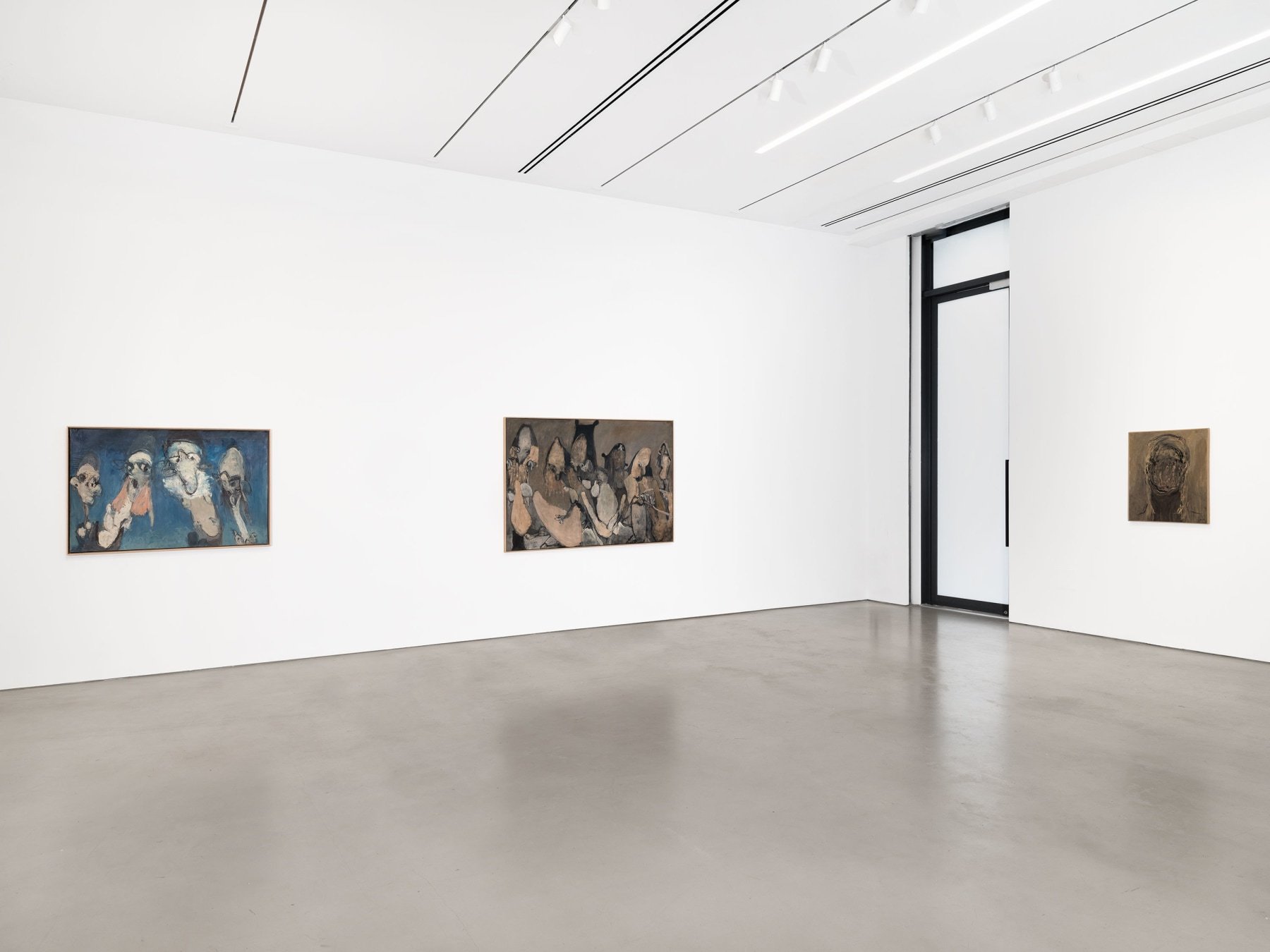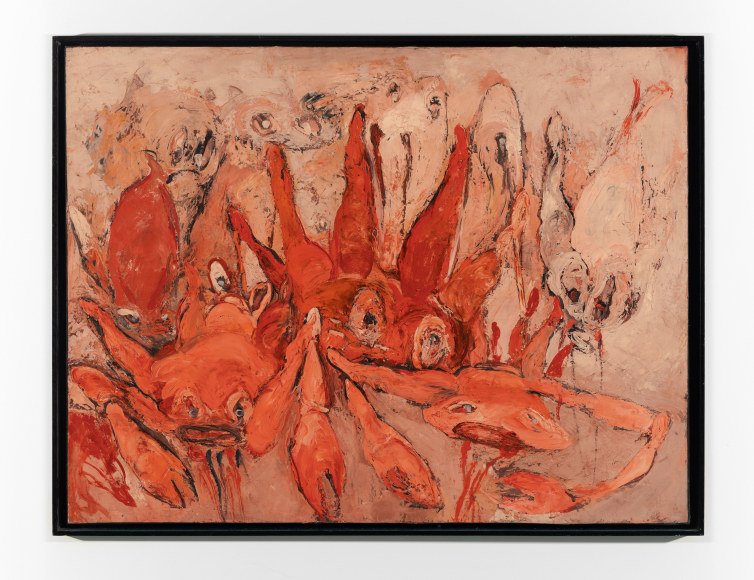ROGER-EDGAR GILLET: DINNER PARTY
Petzel is pleased to present Dinner Party, an exhibition of paintings by Roger-Edgar Gillet (1924–2004), the French artist’s second solo presentation with the gallery.
January 16 - February 22, 2025
In conversation with Alexis Pelletier in 1998, Gillet recalls, as a six-year-old, being struck by the sight of bakers kneading dough, and workers pouring tar on the streets. As he stated to Pelletier, “For me, painting is foremost matter.” Fifteen years later, this early affinity toward material became a constant among his paintings, taking shape in various forms over the next 40 years with gestural virtuosity.
Emerging from the Seconde École de Paris, an influential post-war generation of French painters defined by a movement toward abstraction, Gillet turned to expressionist figuration after a transformative visit to the United States in 1955. Resigning from Art Informel, his works of the ’60s, still engaging his earthy palette of the ’50s, strived toward gnarled faces and limbs, cast in bravura strokes. His lifetime dedication to the production of portraits, which he playfully called his “best” medium, is evidenced by Untitled, 1996, a visage without eyes, wrought with slashes of umbers and browns. In 1962, Gillet began a series of portraits titled “Apostles” (“Apôtres”), in which faces are faintly suggested.
Rather than religious allusion, Gillet’s ‘apostles’ nod to a lineage of classical thinkers and fellow painters. Forty-five years later, he took this theme up again with around forty portraits, each whose contours were more defined, but whose features, and sometimes their gaze, were obliterated by the material.
Gillet found inspiration in both classical and contemporary motifs, drawing on the intellectual and literary generation of his epoch, in addition to antecedents such as Francisco Goya, Honoré Daumier, and James Ensor. However, he sought an alternative beyond the preeminent art movement of mid-century Paris, prioritizing raw feeling, and reveling in the carnivalesque and grotesque. Gillet’s tormented visions, often infused with a tragicomic drama, are both perennial and prophetic to the present-day viewer, imbued with lasting truths regarding the human condition.


